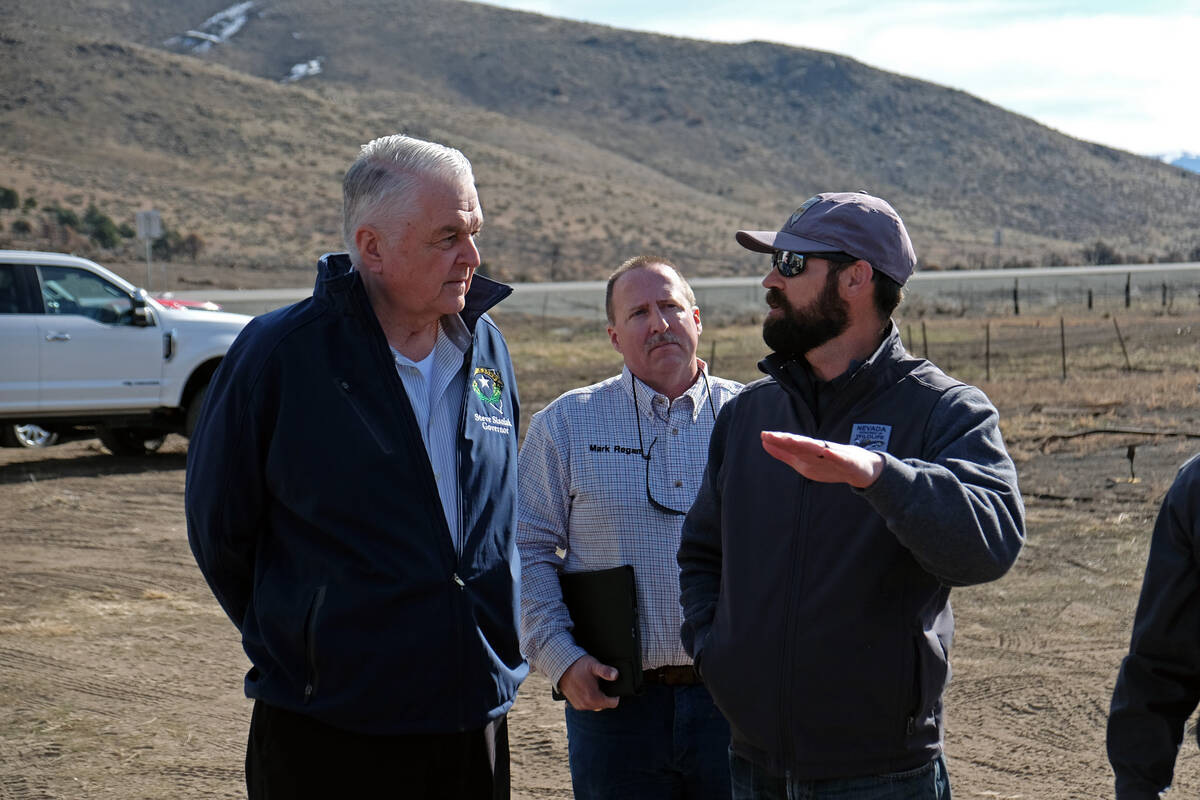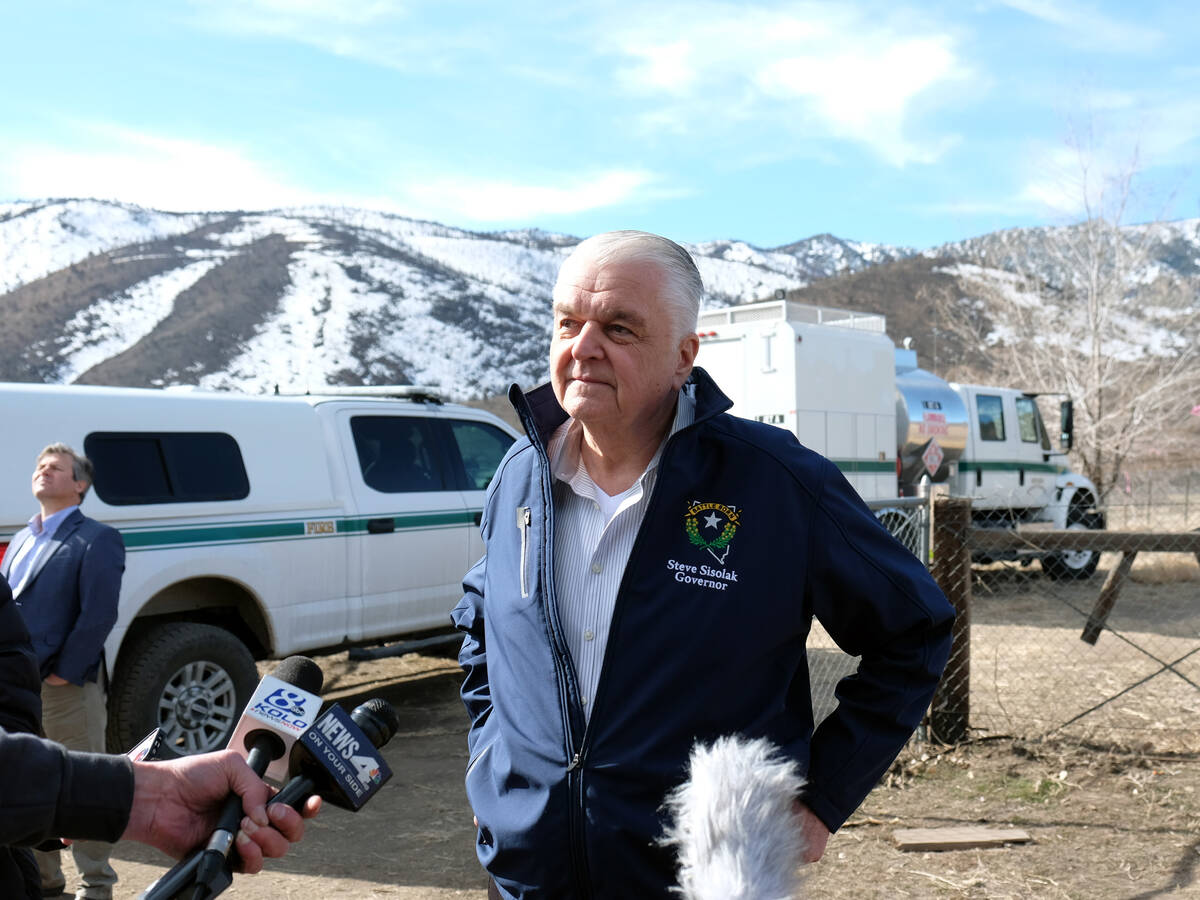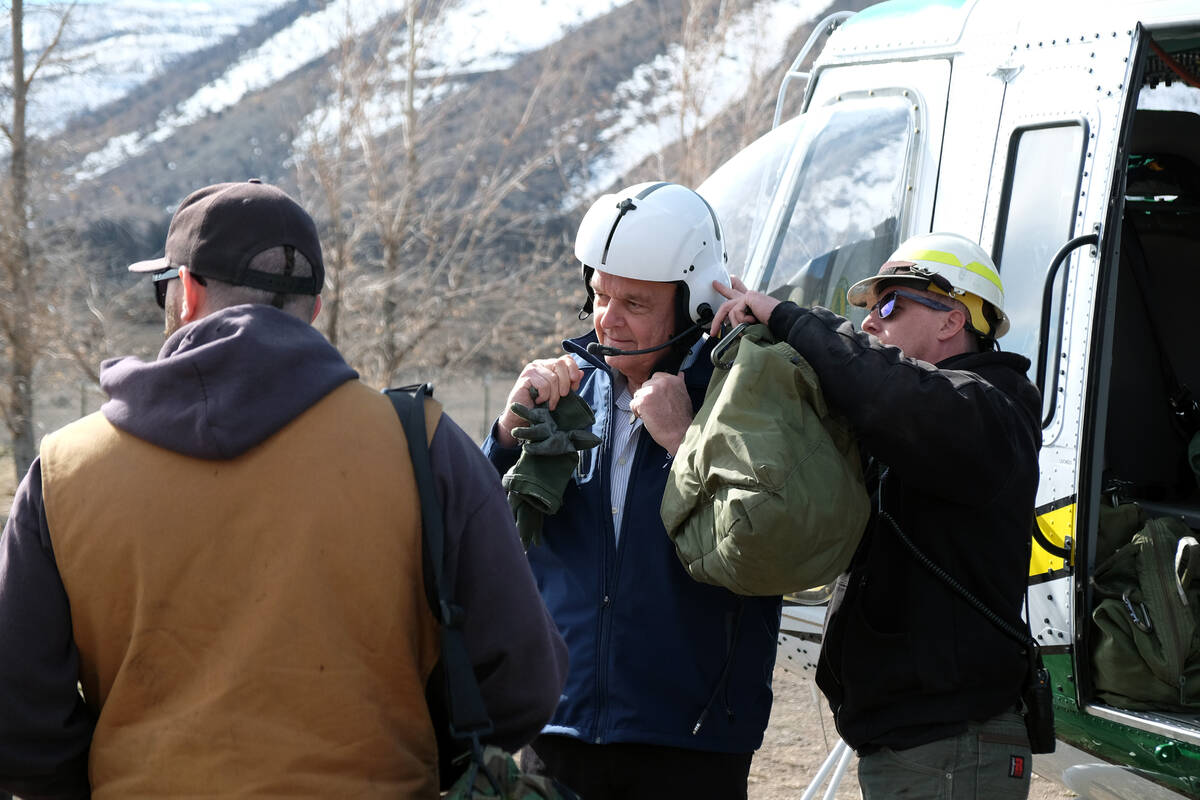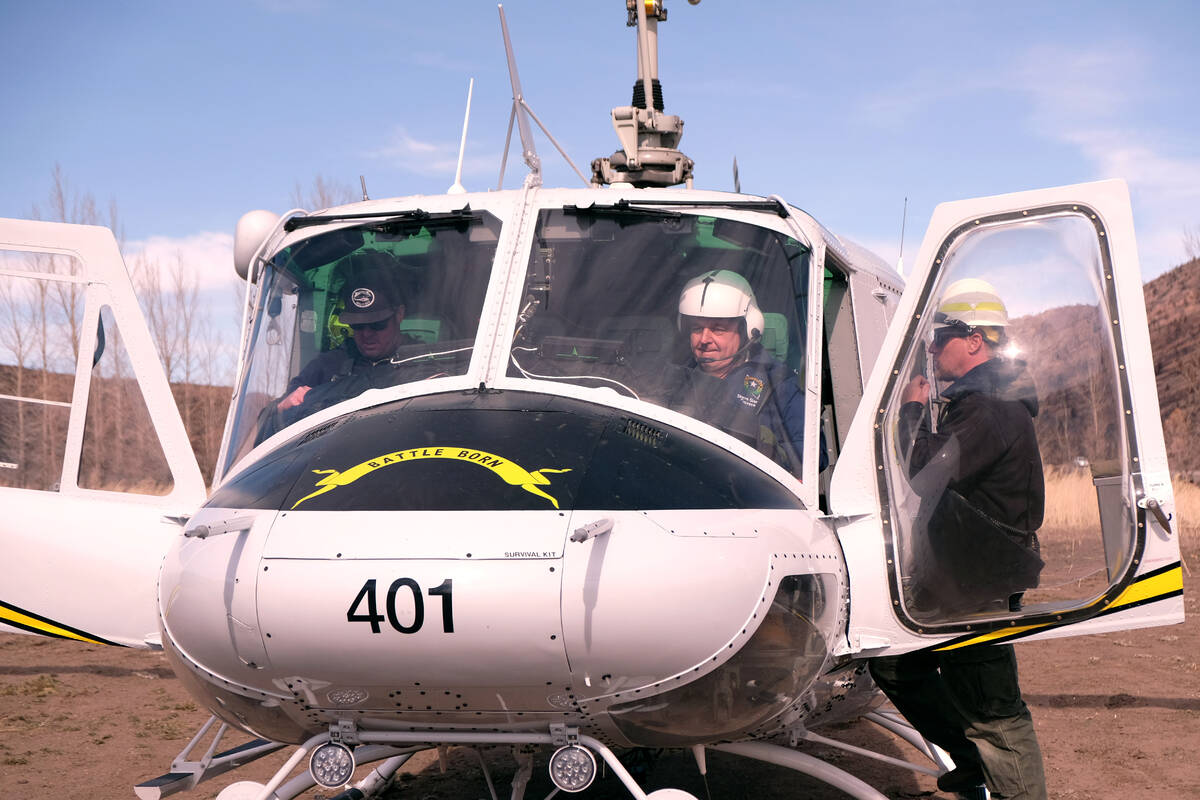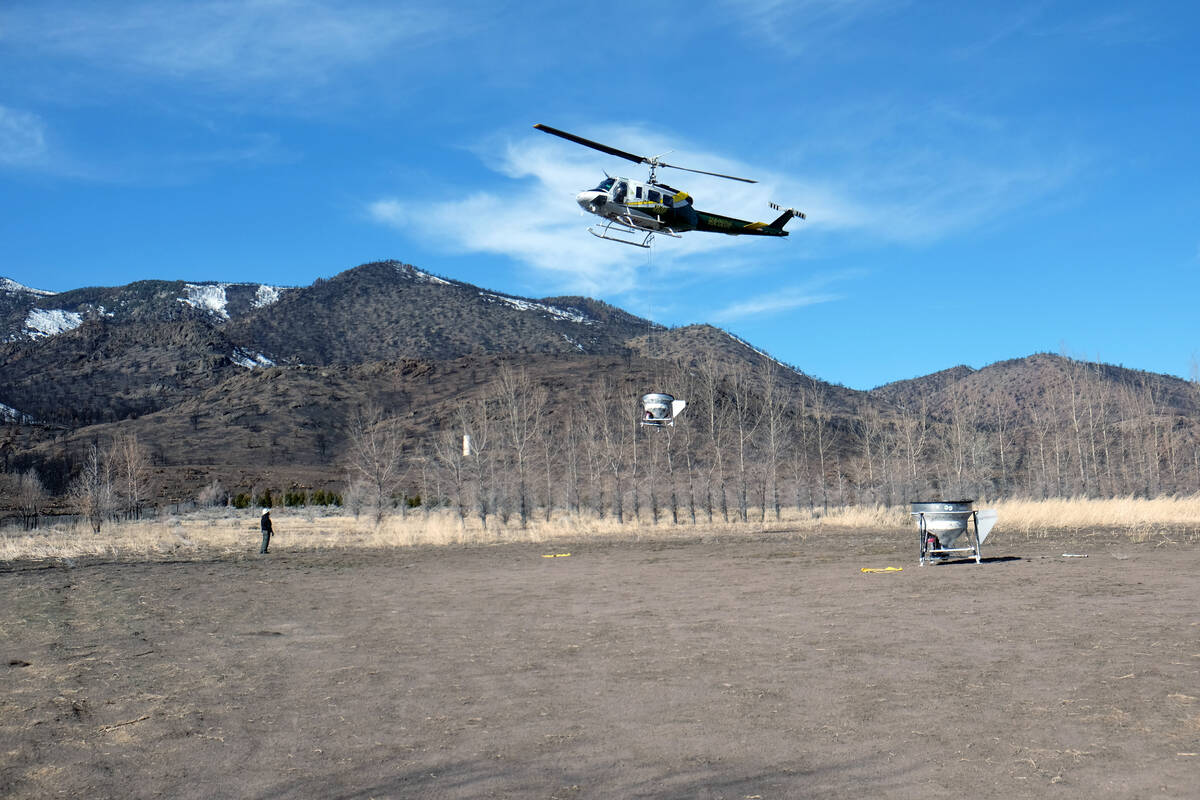Sisolak inspects reseeding efforts following Tamarack Fire
GARDNERVILLE — Gov. Steve Sisolak got an up-close look Wednesday at efforts to reseed roughly half of the nearly 15,000 acres of Douglas County woodlands scorched in last summer’s Tamarack Fire on the Nevada-California border.
A multi-agency effort now underway aims to drop more than 35 tons of seed — a mixture of fire-resilient grasses, flowers and shrubs — over more than 8,000 acres on the Nevada side of the fire’s burn scar.
“If we do nothing, it’s gonna turn to cheatgrass, something none of us want,” said Mark Freese, habitat biologist with the state Department of Wildlife.
The Tamarack Fire was sparked by lightning on July 4 and consumed more than 68,000 acres total, approximately 53,800 in California and 14,900 in Nevada. It was declared fully contained in October.
Across the two states, 23 homes and other buildings were destroyed and three were damaged.
In Nevada, the fire burned more than 10,000 acres of territory used by area mule deer herds and more than 5,000 acres of sage grouse habitat.
The state Division of Forestry will do $150,000 in seed and rehabilitation work. The Department of Wildlife, with financial support from outdoor recreation fans and conservation groups including Reno Nevada Bighorns Unlimited, Nevada Muleys, Nevada Chukar Foundation, Elko Bighorns Unlimited, and the Dream Tag Foundation, produced some 65,000 pounds of seed to cover more than 7,500 acres at a cost of nearly $700,000, according to the governor’s office.
Anna Higgins of the state Division of Forestry, who led an inmate firefighting crew against the blaze last summer, said Wednesday that helicopters were able to seed all 30 miles of firebreaks created by bulldozers on the Nevada side to protect property.
A helicopter dropping seed circled the area overhead during Wednesday’s event.
The restoration effort is seeding plant species that can better cope with the impacts of climate change, drought and wildfire and block quick-to-burn cheatgrass from overtaking the landscape.
“Fires don’t know borders, and the reseeding, the rejuvenation of land shouldn’t know boundaries, either,” Sisolak said before boarding a helicopter for an overhead view of the operation.
“But now comes a long tedious process of trying to restore what we had here, and this is the beginning of that.”
“If we don’t do something, as they said, cheatgrass will dominate the growth here and then it’ll catch every couple of years, which is really devastating,” he said.
Contact Capital Bureau reporter Bill Dentzer at bdentzer@reviewjournal.com. Follow @DentzerNews on Twitter.



